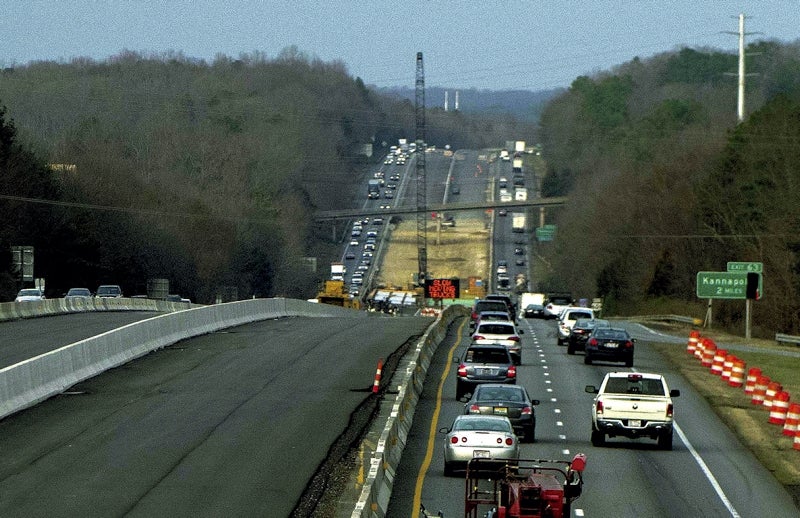Ferrel Guillory: Post-recession dynamics reshape the Tar Heel State
Published 12:00 am Thursday, March 8, 2018

- 'We want North Carolina to have good quality roads and bridges, not necessarily to spend the most tax money on transportation,' Hood says.
As my family prepared to move to North Carolina in 1972, I read the standard analyses of the state that would soon become home. Then, two sets of “three’’ defined North Carolina — East-Piedmont-West in geography, textiles-tobacco-furniture in the economy.
In 1972, North Carolina was a state of 5.1 million residents, more living in rural communities than in cities. Since then, the state’s population has doubled — currently estimated at 10.3 million — with about one-third of its residents in rural places.
In the 10 years since the Great Recession, economic and social dynamics have accelerated a profound shift from the North Carolina of the early 1970s. North Carolina is part of an important national story, explored recently by scholars at the Brookings Institution and by CNN political analyst Ronald Brownstein.
Mark Muro and Jacob Whiton of Brookings have detected “a truly eye-popping divergence of big-, medium-, and small-sized communities’ growth prospects — one that’s getting worse.” Their recent analysis is accompanied by a state-by-state chart, showing the share of state output growth by size of communities from 2010 to 2016.
• Large: 75.8
• Medium: 14 percent
• Small: -0.7 percent
• Non-metro: 10.9 percent
“The nation’s bigger communities — powered by well-educated millennial workers and the agglomeration trends brought by digital technology — are now growing notably faster and accounting for more and more of the nation’s growth than before, even as small metros wane and most of the rural hinterland slides into deep decline,” write Muro and Whiton.
Drawing on Brookings data, Brownstein suggests a widening misalignment of state and national politics with the patterns of economic-geographic change. The upshot, he writes, is a “prosperity paradox.”
“Even as economic growth is concentrating in Democratic-leaning metropolitan areas thriving in the information economy, Republicans rooted in non-urban communities largely excluded from those opportunities now control all the levers of power in Washington and in most states,” Brownstein writes. “That disjuncture raises a pointed long-term question: How long can the places that are mostly lagging in the economy dictate the terms of politics and policy to the places that are mostly succeeding?”
The answer to that question will have a bearing on all manner of public policy, not the least of which is public education. While the state often measures itself on the basis of aggregated statewide data, North Carolina is not simply “one state’’ in its patterns of community growth and decline, which in turn present different sets of challenges among school districts.
Further, it is an oversimplification to depict the state today as “two North Carolinas,’’ rural vs. urban — a distressed countryside of 80 counties in the shadows of 20 surging metropolitan counties. In fact, the state is a complex mixture of metropolitan, micropolitan, and rural regions, a sprawling landscape of cities, suburbs, exurbs and small towns.
See, for example, the maps and charts in Andrew Holton’s two illuminating essays on “legacy cities’’ and micropolitans in December for the N.C. Center for Public Policy Research. Reporting on a recent conference on small cities, Holton found the “differences as pronounced as similarities.”
See also the work of Rebecca Tippett and Jessica Stanford of the Carolina Demography unit of the UNC Carolina Population Center. In a series of online essays over the years, they have noted the state’s “persistent rurality” and that 225 smaller municipalities lost population between 2010 and 2016. Still, Tippett and Stanford report that 124 municipalities showed recent population growth as a result of people deciding to live in what may still be classified as a “rural’’ place but “within a reasonable commuting distance’’ to a major city.
Carolina Demography has pointed out that suburban and exurb expansion has largely fueled the super-charged growth of the Charlotte and Research Triangle metro areas. The state’s two largest metro areas, they reported, accounted for 72 percent of the state’s total growth since 2010.
Even as its decision-makers and educators need to understand more fully how North Carolina has been — and continues to be — reshaped, they also should know that this cautionary observation from the Brookings scholars applies to the state as well as the nation: “None of us is under any illusion that more and bolder responses — from government, the private sector and philanthropy – are anything but imperative.”
Ferrel Guillory is the director of the Program on Public Life, professor of the Practice at the UNC School of Media and Journalism, and the Vice Chairman of EducationNC.

